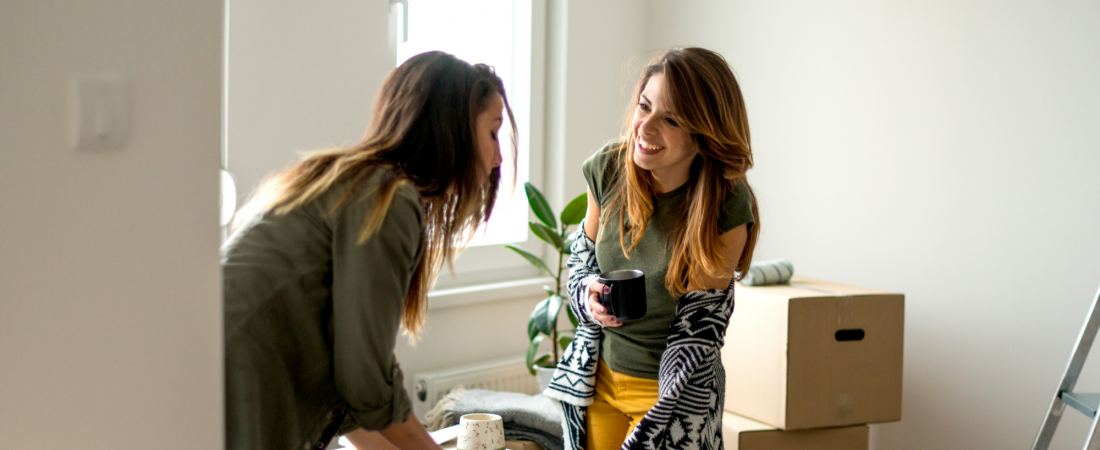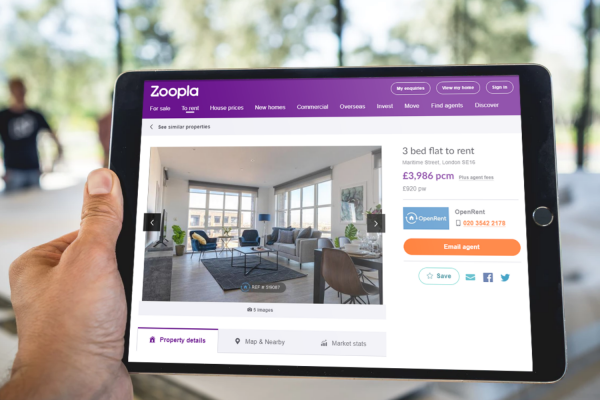Have you unexpectedly acquired an extra property, want to rent it out and are not sure what to do next? This quick guide is for you. In a 5-minute read, we’ll guide you through the key steps you need to take when becoming a landlord.
Step 1: Get your property ready for letting
First, check you’re actually allowed to let the property. If you have a residential mortgage, you will need to contact your provider to make sure they’re happy to give you consent to let. Alternatively, you might want to convert to a buy-to-let mortgage. These are more expensive but are specially tailored for the needs of landlords. If you’re a leaseholder, you may need to contact your freeholder to obtain their permission as well.
Do you need a licence? Some councils require all properties to be licenced. You should check your local authority (council) website before you start letting. If you plan to rent your property by room rather than as an entire property, and you have more than 5 tenants with shared facilities like kitchen or bathroom, then, you will need an HMO licence. Learn more about HMOs and licensing here.
Make sure your property is safe. All landlords need to meet important safety rules and regulations. These include obtaining a Gas Safety Certificate, which needs renewed annually by a qualified engineer; an Electrical Installation Condition Report (EICR), to be renewed every 5 years; and fire safe furniture and furnishings.
You will also need to get an Energy Performance Certificate (EPC). This is a summary of the energy efficiency of the property. As well as following the official guidance, you also need to use good old-fashioned common sense to make sure your rental home is free of any hazards that could cause an accident, such as broken floorboards or windows which don’t lock.
Finally, think about the presentation of your property. Who are you going to let it to? Students or professionals in a house share? For these it will usually need to be fully furnished. Families? This might be more appropriate to let it unfurnished. For all tenants, a good coat of paint never goes amiss.
Also remove anything of sentimental value. Never mind how good your tenants are, you need to prepare for accidents!
Step 2: Do a Budget
It’s sensible to do your sums before letting for the first time. Although many believe being a landlord is a cash cow, this isn’t always the case – especially in the early years of being a landlord when you have one off costs and your mortgage costs may be higher. Like everything, it gets more efficient with practice.
Here are some financial considerations landlords need to make.
Upfront Costs
These include furnishings, safety certificates and repairs that you need to make to the property to let it. Before advertising the property, you may also need to pay for professional photography and a floor plan. Once you find tenants, you will need to pay costs such as referencing, drafting of the contract and preparation of the inventory (see below).
Bills you still have to pay
Although the tenant will usually be expected to pay gas, electric, water, council tax and their own contents insurance, you will still need to pay for specialist landlord insurance to cover your furnishings, building and cover you for liabilities . You may also opt to get rent guarantee insurance. And of course, there’s your mortgage. Don’t forget that this may go up in price in the future.
Using a managing agent or self-managing
How will you deal with repairs and maintenance during the tenancy? Will you do this yourself or get an agent to help you? If you use an agent it can be expensive (up to 20% of total rent + vat if you use them to find your tenants, too) and they may not cover everything you expect them to – for example, no weekend or evening cover for emergencies. They will also add a markup to any trades work that is needed.
Self-managing is a lot cheaper, but you will need to arrange repairs when things go wrong. It does have the additional advantage, however, that you keep control of repairs and can ensure the area affected is ‘made good’ afterwards. We’ve all heard stories of managing agents who do a sticking plaster job that ends up causing big damage to your property in the long run. In reality, for most properties, self-managing is relatively simple and just involves organising tradespeople a few times per year.
How much rent you should charge
It’s not all about charging as much as you can. If you don’t set a realistic price, your property may take a long time to let. The rent you lose while your property’s empty may cost more that you will get from holding out for a higher price. Check out what similar properties in your area go for and use our Rent Calculator for a quick estimate on how much you should rent your property for.
Tax
You will need to pay income tax on your profits via an annual self-assessment tax return. The good news is that there are a number of reliefs you can claim. We don’t have space to go into the intricacies of the landlord tax regime in this article but, be advised, this is something you definitely need to think about.
Step 3: Find tenants
There are four main ways of advertising your property: using a high street estate agent, using an online letting agent, advertising on free listing sites, or asking friends and family.
The high street agent is the most common route used. The main pro of the high street agent is that they do the viewings, saving you time. The downsides are that they are very expensive (up to 15% of total rent + vat) and you will have less control over who rents your property. Often the first time you meet your new tenants will be at the check in – or when they call you to complain about the agent!
With online lettings agents you usually do the viewings. You get to meet your new tenants and ask them questions up front. You’ll also pay a lot less – usually a set fee of under £100.
You can also use free listings sites such as Gumtree but you won’t get the additional advice and support you would normally get from an agent. For example, you’ll be on your own when processing the deposits, drafting the contract or doing the right to rent check.
Asking friends and family is another option. It’s not always smooth sailing, though. You’ll still need a contract, to pay tax on rental income, and ensure the property meets legal standards.
Read our full guide to letting to friends and family,
Step 4: Set up the tenancy
Once you find the perfect tenants, it is advisable to take a holding deposit from them. This secures the property for them while you sort any references and prepare the contract. You get to keep the holding deposit if they subsequently change their mind. The holding deposit is capped at one week’s rent.
It is generally recommended that you reference check all your tenants. Your letting agent can normally organise this for you or, if you’re going alone, you can find referencing agencies easily online. The key things the referencing agency will check for are: can your tenant afford the property; are they who they say they are; and is there any evidence of previous behaviour that may potentially affect your tenancy, such as CCJs? The agency will give you a recommendation whether to accept the tenant.
Once referencing is done, you need to supply a contract. In England and Wales, this is an Assured Shorthold Tenancy, known as an AST. In Scotland, you’ll need a Private Residential Tenancy.
The contract sets out the terms of the tenancy, including the rent you’re charging, the security deposit (capped at 5 weeks’ rent) and the length of the tenancy. This is where you can add any specific instructions you want your tenants to agree to, for example, allowing you to do an inspection of the property every 6 months, or asking your permission before getting a pet. Your letting agent will have a standard contract that you can add your own clauses to.
Once the contract is signed, the tenant should forward the first month’s rent (minus the holding deposit) and the security deposit to you before moving in. You must protect your tenants’ deposit with a government-approved deposit protection scheme within 30 days of receiving it. There are three schemes to choose from – MyDeposits, Deposit Protection Service (DPS) and the Tenancy Deposit Scheme (TDS). In addition, you’re legally obliged to provide your tenants with Prescribed Information relating to the deposit. The scheme you use will give guidance on how to do this but it usually doesn’t involve more than filling out a list of details associated with the deposit.
OpenRent can handle your entire tenancy setup for just £69.
Set up your tenancyIf your property is in England, then you need to check that the tenants have the right to rent in the UK before they move into the property. This is called a Right to Rent check. Usually this means seeing and taking a copy of their passport or residence document.
There are also a number of documents you need to supply your tenants with before you move in: the Gas Safety Certificate, Electrical Installation Condition Report (EICR) and Energy Performance Certificate (EPC) mentioned above. In addition, there is a government booklet ‘How to Rent Guide’ that you must download and forward to your tenants. This is essentially a checklist for tenants that also includes their rights and how to use them – you can find it here.
You should also give your tenants copies of the instruction manuals for any appliances in the property. If nothing else, this will save you from late night calls asking how the washing machine works!
Finally, you need an inventory and it’s worth considering using a professional inventory clerk to do this. They will make a detailed record of the condition of your property that can be used at checkout to check if the tenants damaged the property or its furnishings. You can prepare the inventory yourself but an independently created document can have more sway with the deposit protection scheme should you need to claim for a deduction later on. Make sure you get the tenants to sign and date the inventory at check in or it won’t be enforceable.
Step 5: Set up a standing order
Finally, the shortest but most important step of all – ask your tenants to set up a standing order so your rent is paid on time every month!
This, after all, the main reason that you’ve gone to the effort of completing steps 1-4…
Best of luck with your new tenancy. We hope this guide has been helpful in outlining what a landlord needs to think about before renting out their property for the first time.




Start the discussion at community.openrent.co.uk